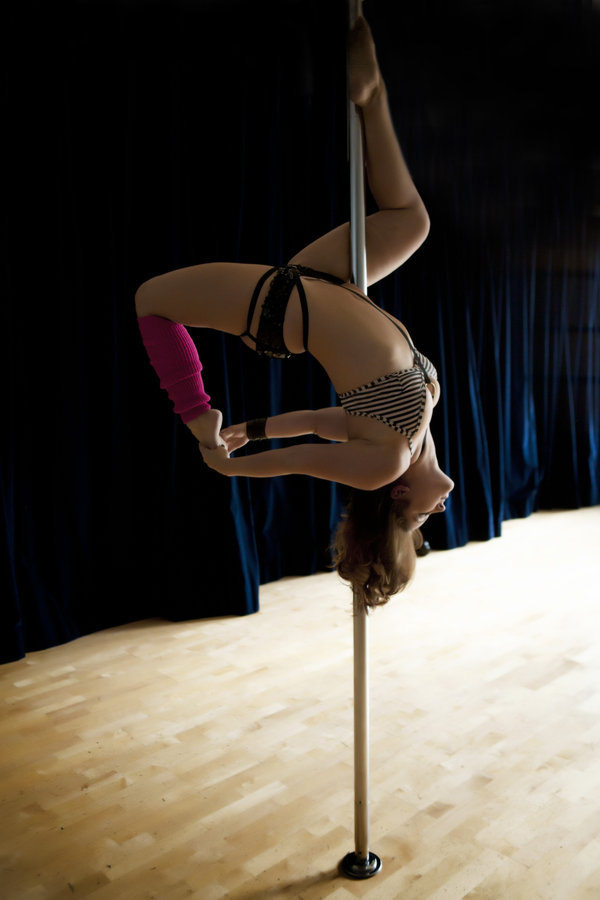Melissa Goliczewski is a Bayonne native who works as a copywriter at an ad agency in New York. But her passion is pole dance fitness. If you’re thinking Bada Bing! think again. Starting in 2010, she taught this demanding exercise regimen with a partner at Life Fitness here in town. They suspended classes there in late August but expect to reopen at a new Bayonne location in late fall. Email mgoliczewski@gmail.com for updates.
Pole dance fitness became popular in the 1990s. “I first discovered it eight years ago when my girlfriend took classes in New York City,” says Goliczewski. “I checked it out and I had a blast. I’ve been attending classes at a studio in New York ever since.”
Pole dance fitness is a worldwide phenomenon. “Around the world, some women started out as exotic dancers or gymnasts who wanted to create something new to challenge themselves,” she says. The trend started in “studios in London and other major cities and then trickled to the suburbs and smaller towns like Bayonne.”
The classes are divided in half. The first half is the warm-up, which consists of strength-building—pushups, sit-ups, and squats—and stretching for flexibility. The warm-up is set to relaxing, moody music. This portion of the workout is done off the pole.
Perception is Everything
OK, let’s get real. Any activity that involves pole dancing is going to raise some eyebrows. The Bada Bing! club of The Sopranos fame may have put pole dancing front and center. But since then, it seems as if lots of popular shows have pole-dancing scenes with exotic dancers in sleazy strip clubs.
“If you just call it exotic dancing or pole dancing, there’s a stigma,” Goliczewski says, “but that’s not what it is at all.” For starters, they don’t take their clothes off; they wear shorts and tank tops. “It’s a very welcoming environment for women of all ages and all sizes. No stripping is involved.”
Men are not allowed in the classes, and Goliczewski doubts that men would sign up anyway. All-women classes, Goliczewski says, make for an accepting environment that encourages students to try things without being self-conscious. The age range is from the twenties to the sixties.
Working the Pole
The second half of the class takes place on three poles and involves learning the actual “tricks.” Beginners do spinning tricks. With the feet on the floor, they walk around the pole and move the body so that it spirals around the pole. Intermediate and advanced students do tricks at a higher level involving strength, leaving the floor, climbing the pole, inverting the body, and hanging on only with the legs and feet.
Goliczewski creates a new playlist every week. Music that accompanies pole work is more upbeat than that which accompanies the warm-up.
“It’s basically a full-body workout that focuses on the core, arms, and legs,” Goliczewski says. “Depending on what we work on, you can feel it the next day and the day after.”
The classes are limited to nine women, three per pole. It’s exhausting, so students like the fact that they can take a breather while another student works out.
Goliczewski grew up in Bayonne, and her parents, grandmother, and uncles still live here. She attended Holy Family Academy and then went to the School of Visual Arts in Manhattan.
She’s watched Bayonne change over the years. “I see more younger people out and about, at Lot 13, socializing,” she says, “but Bayonne has a lot further to go. I hope it becomes the new Jersey City or Hoboken.”
As for pole dance fitness? “I never thought that this would become such a part of my life,” she says. “I hope to get women who like to try something new, and why not?”—Kate Rounds
PHOTOS BY © DIVAVOOM PHOTOGRAPHY
